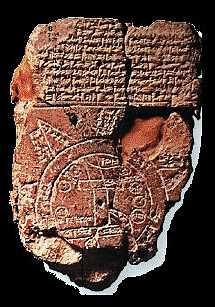Beginning about 2000 BC, the Assyrians used the term "People of the Nairi" to describe the peoples on the Armenian Plateau. The territory and people both were called Nairi, but the word meant "country or land of rivers", and contemporary Assyrian accounts describe about 60 different tribes and small kingdoms and about 100 cities included in this land.
The "people" in this description were an alliance of tribes led by a dominant tribe, the Nairi. They were by now more than tribes; they were city-states in a common alliance. The Nairi alliance was based around Lake Van, which together with the Ararat Valley has the most fertile land in Western Asia, as well as the largest mineral deposits in Asia Minor and Mesopotamia.
The Nairi were one tribe among many, but their name became synonymous with that for the entire region. From what we know of the tribes at this time, their customs and traditions were similar to others found in Mesopotamia, and they mixed Semitic or Ugaritic origins with their earlier Indo-European genetic and cultural roots. Among the tribes in Nairi was one called Urartu.
About the word Nairi: The Armenian letter "i" (sounds like "ee") can be traced to 15th c. BC inscriptions for water. Both the Nairi and the Haius used this sound/symbol, as did the Assyrians. Thus, the word "nair" meant land, and "i" stood for water/rivers. The land of rivers north of Mesopotamia is that between the Euphrates and the Tigris, which flow from tributaries and sources above and below Mount Ararat. Ararat was already known as the mountain of the gods, and the territory was one of the major trade routes from Asia.
The Nairi were considered a force strong enough to tackle both the Assyrians and Hittites, and populated a large territory rich in resources. They were attacked by the Assyrian king Tukulti-Ninutra I, and inscriptions found at the Assyrian palace at Assur tell how 43 kings of the lands of Nairi rose up against the Assyrians, were defeated and brought to Assur in chains. The Nairi offered ransom to the king, tribute was extracted from them, and a new honor was added to the official style of the Assyrian king, "king of the lands of Nairi".
 The
Nairi continued to resist Assyrian domination, and a second campaign by the
Assyrian king Tiglath-Pileser I (1126-1090 BC) invaded the whole of the western
part of the Armenian Plateau from North to South. The Assyrians penetrated
into enemy territory to a depth of more than 300 miles. Assyrian
annals describe the campaign in part:
The
Nairi continued to resist Assyrian domination, and a second campaign by the
Assyrian king Tiglath-Pileser I (1126-1090 BC) invaded the whole of the western
part of the Armenian Plateau from North to South. The Assyrians penetrated
into enemy territory to a depth of more than 300 miles. Assyrian
annals describe the campaign in part:
"…Sixty kings of the lands of Nairi, together with those who came to their aid did I drive with my spear as far as the upper seas (the Black Sea). I captured their great cities, I carried off their riches and their spoils, I gave their dwellings to flames…All the kings of Nairi did I capture alive. But to all these kings I showed mercy…freeing them from their bonds of captivity…"
There is no mention in the campaign of the areas around Lake Van, suggesting the Assyrians deliberately avoided the area occupied by the most powerful alliance of tribes.
 By
the 11th c BC, the Nairi were being usurped by the Urartians for hegemony
in the region, and Assyrian cuneiform from this period record the first mention
of Urartu as a strong power. Other rival tribes (or kingdoms, as they were
called) in the area included the Mitanni, southwest of Lake Van, the Manah
(around Lake Urmia) and the Diaukhi (around present day Erzurum). The
Diaukhi were, at the time of the rise of Urartu, the most powerful political
formation of the Nairi.
By
the 11th c BC, the Nairi were being usurped by the Urartians for hegemony
in the region, and Assyrian cuneiform from this period record the first mention
of Urartu as a strong power. Other rival tribes (or kingdoms, as they were
called) in the area included the Mitanni, southwest of Lake Van, the Manah
(around Lake Urmia) and the Diaukhi (around present day Erzurum). The
Diaukhi were, at the time of the rise of Urartu, the most powerful political
formation of the Nairi.
The Assyrians never succeeded in completely subjugating the Nairi, but within 200 years its influence waned through the rise of a related tribe, the Urartu. This early slave-holding state first occupied the territories lying around Lake Van, on the Eastern Shore of which lay its capital, Tushpa (present town of Van). This was the same territory inhabited by the Nairi. As the Urartian kingdom rose to become one of the greatest regional powers in the region, the Nairi gradually disappeared within the limits of the country of Khubushkia, south of Lake Van on the banks of the river Bokhtan-su, though they continued to be mentioned by Assyrian kings until the 8th c BC. The area of present day Armenia was held by the kings of Etwikhi (Etwini).